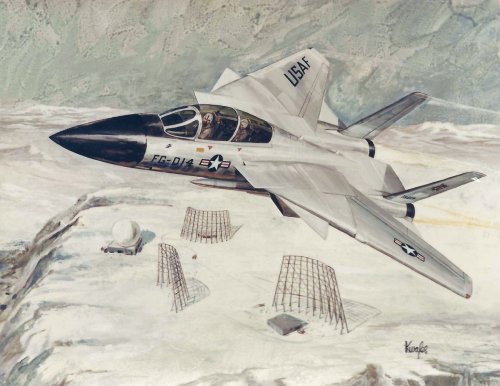- Joined
- 21 May 2006
- Messages
- 2,833
- Reaction score
- 1,916
USAF ‘Improved Manned Interceptor’ (IMI) Program
On 9 February 1968, the Defence Department announced they were not going to purchase the Lockheed F-12A interceptor (later the SR-71), opting instead to remain with the F-106 as the primary interceptor to protect the continental USA from air attack.
The USAF's Improved Manned Interceptor program, which was an attempt to find a replacement for the Convair F-106 Delta Dart.
North American/Rockwell NR-349
Grumman (F-14 IMI)
Convair (F-106E/F)
Does anyone have any art work, drawing, and specifications for these three proposals
And was there others?
The North American/Rockwell NR-349 looks very interesting with its three General Electric J79 turbojets, although a two Pratt & Whitney F100 turbofan arrangement would had been better and more efficient engine arrangement (I think).
I also think the semi-recessed arrangement for its six Phoenix AAM’s would also be very efficient.
–Some say it could have been America’s equivalent to the Soviet
MiG-25 Foxbat
Regards
Pioneer
On 9 February 1968, the Defence Department announced they were not going to purchase the Lockheed F-12A interceptor (later the SR-71), opting instead to remain with the F-106 as the primary interceptor to protect the continental USA from air attack.
The USAF's Improved Manned Interceptor program, which was an attempt to find a replacement for the Convair F-106 Delta Dart.
North American/Rockwell NR-349
Grumman (F-14 IMI)
Convair (F-106E/F)
Does anyone have any art work, drawing, and specifications for these three proposals
And was there others?
The North American/Rockwell NR-349 looks very interesting with its three General Electric J79 turbojets, although a two Pratt & Whitney F100 turbofan arrangement would had been better and more efficient engine arrangement (I think).
I also think the semi-recessed arrangement for its six Phoenix AAM’s would also be very efficient.
–Some say it could have been America’s equivalent to the Soviet
MiG-25 Foxbat
Regards
Pioneer









